Ulnar Collateral Ligament (UCL) Injury
The ulnar collateral ligament (UCL), also called medial collateral ligament, is located on the inside of the elbow and connects the ulna bone to the humerus bone. It is one of the main stabilizing ligaments in the elbow especially with overhead activities such as throwing and pitching. When this ligament is injured or torn, it can end a professional athlete’s career unless surgery is performed.
The common symptoms associated with a UCL tear are as follows:
- Pain on inner side of the elbow
- Unstable elbow joint
- Numbness in the little finger or ring finger
- Decreased performance in activities such as throwing baseballs or other objects
Ulnar collateral ligament tear is usually caused by repetitive overhead throwing such as in baseball. The stress of repeated throwing on the elbow causes microscopic tissue tears and inflammation. With continued repetition, eventually the UCL can tear preventing the athlete from throwing with significant speed. If untreated, it can end an athlete’s professional career. UCL tear may also be caused by direct trauma such as with a fall, car accident, or work injury. Other causes include any activity that requires repetitive overhead motion of the arm such as tennis, pitching sports, fencing, and painting.
UCL tear should be evaluated by an orthopedic specialist for proper diagnosis and treatment. Your physician will perform the following:
- Medical history
- Physical examination including a valgus stress test to assess for elbow instability
Other tests such as X-rays and MRI scans may be ordered to confirm the diagnosis.
Your physician will recommend conservative treatment options to treat the symptoms associated with UCL injury unless you are a professional or collegiate athlete. In these cases, if the patient wants to continue in their sport, surgical reconstruction is performed.
Conservative treatment options that are commonly recommended for non-athletes include the following:
- Activity restrictions
- Orthotics
- Ice compression
- Medications
- Physical therapy
- Pulsed ultrasound to increase blood flow to the injured ligament and promote healing
- Professional instruction
Procedure
If conservative treatment options fail to resolve the condition and symptoms persist for 6-12 months, your surgeon may recommend ulnar collateral ligament reconstruction surgery. UCL reconstruction surgery repairs the UCL by reconstructing it with a tendon from the patient’s own body (autograft) or from a cadaver (allograft). It is also referred to as Tommy John Surgery. The most frequently used tissue is the palmaris longus tendon in the forearm. The basic steps for UCL reconstruction surgery include the following:
- The surgery is performed in an operating room under regional or general anesthesia
- Your surgeon will make an incision over the medial epicondyle area
- Care is taken to move muscles, tendons, and nerves out of the way
- The donor tendon is harvested from either the forearm or below the knee
- Your surgeon drills holes into the ulna and humerus bones
- The donor tendon is then inserted through the drilled holes in a figure 8 pattern
- The tendon is attached to the bone surfaces with special sutures
- The incision is closed and covered with sterile dressings
- Finally a splint is applied with the elbow flexed at 90 degrees.
Post-operative care
After surgery your surgeon will give you guidelines to follow, depending on the type of repair performed and the surgeon’s preference. Common post-operative guidelines include:
- Elevate your arm above heart level to reduce swelling
- Wear an immobilizing splint or cast for 1-3 weeks
- Apply ice packs to the surgical area to reduce swelling
- Keep the surgical incision clean and dry. Cover the area with plastic wrap when bathing or showering
- Physical therapy will be ordered for strengthening and stretching exercises after the removal of the splint or cast
- Professional athletes can expect a strenuous strengthening and range of motion rehabilitation program for 6-12 months before returning to their sport
- Eating a healthy diet and not smoking will promote healing
Risks and complications
As with any major surgery there are potential risks involved.
The majority of patients suffer from no complications following UCL Reconstruction surgery; however, complications can occur and include:
- Infection
- Limited range of motion
- Nerve damage causing numbness, tingling, burning or loss of feeling in the hand and forearm area
- Cubital Tunnel Syndrome
- Elbow instability










